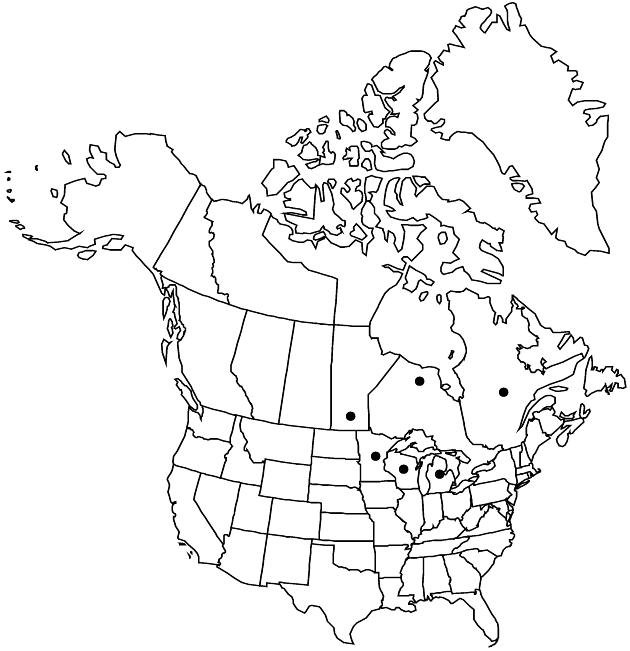Symphyotrichum robynsianum
Phytologia 82: 138. 1997.
Perennials, 10–80 cm, colonial; long-rhizomatous. Stems 1, erect (± flexuous, often reddish), glabrous, hairy in lines distally. Leaves stiff, margins sparsely serrulate or entire, ± revolute, scabrous, apices acute to acuminate, mucronulate, faces glabrous, sometimes midveins hairy; basal withering by flowering, long-petiolate, petioles narrowly winged, bases sheathing, blades lanceolate, ca. 20 × 3–5 mm, slightly attenuate to narrowly cuneate; proximal cauline withering by flowering, sessile or subpetiolate, blades linear-lanceolate to -oblanceolate, 100–200 × 4–8 mm, bases cuneate to attenuate, clasping; distal sessile, blades linear-lanceolate to linear, 10–110 × 1–7 mm, progressively reduced distally, bases cuneate to rounded, slightly clasping or not, margins entire. Heads in elongate, open, narrow, paniculiform or racemiform arrays, branches ascending, short, leafy, branch leaves smaller and reduced distally (heads 1–3 per branch). Peduncles glabrous or ± densely pilose in lines, bracts 1–4, linear, sometimes inrolled distally, clasping, ciliate, distal 1–2 often subtending and surpassing involucres. Involucres campanulate, 5–8.5 mm. Phyllaries in 3–4 series, oblong-lanceolate, subequal, bases indurate 1/3–3/4, margins scarious, erose, hyaline, ciliate proximally, sparsely ciliolate distally, green zones lanceolate to linear, sometimes outer ± foliaceous, apices acuminate to long-acuminate, often foliaceous, mucronate to apiculate, faces glabrous, eglandular. Ray florets 20–35; corollas dark blue-violet, seldom white, laminae 8–13 × 1–1.5 mm. Disc florets (18–)23–40; corollas yellow, 4–6.5 mm, tubes shorter than funnelform throats, lobes lanceolate, 0.8–1 mm. Cypselae tan, obovoid, compressed, ca. 2.2–2.4 mm, 5–6-nerved, faces sparsely strigillose; pappi pinkish, 7–8 mm. 2n = 64, 80.
Phenology: Flowering Aug–Sep.
Habitat: Wet or damp, open, sandy, gravelly, or rocky grounds, often calcareous, cracks in rocky stream or lake shores, limestone alvars, seasonally wet glades and swales, jackpine outwash plains
Elevation: 10–400 m
Distribution

Man., Ont., Que., Mich., Minn., Wis.
Discussion
The name Aster longifolius Lamarck has been misapplied to this taxon.
Selected References
None.